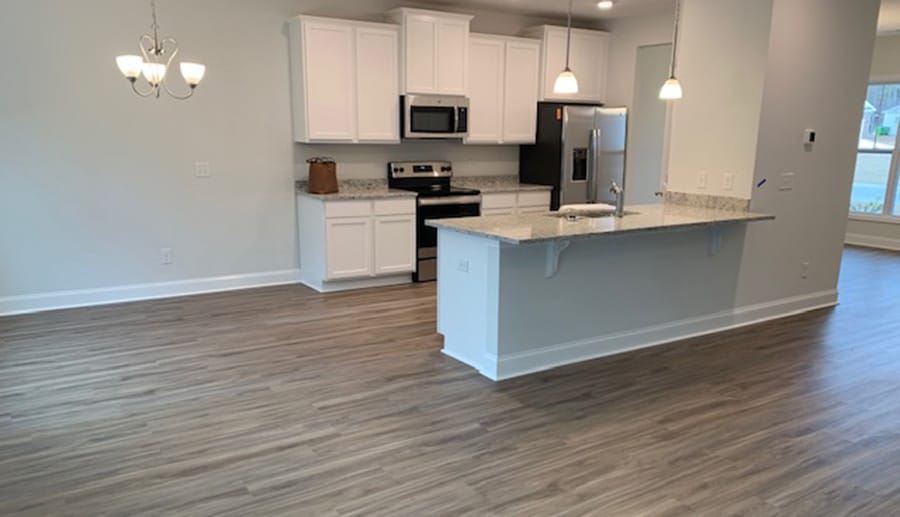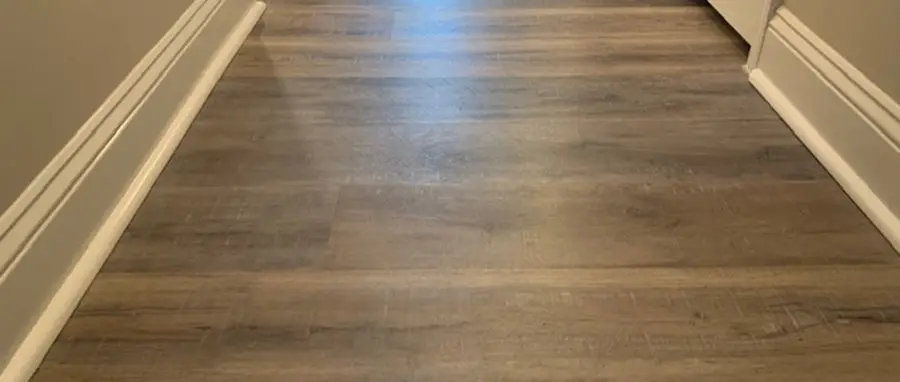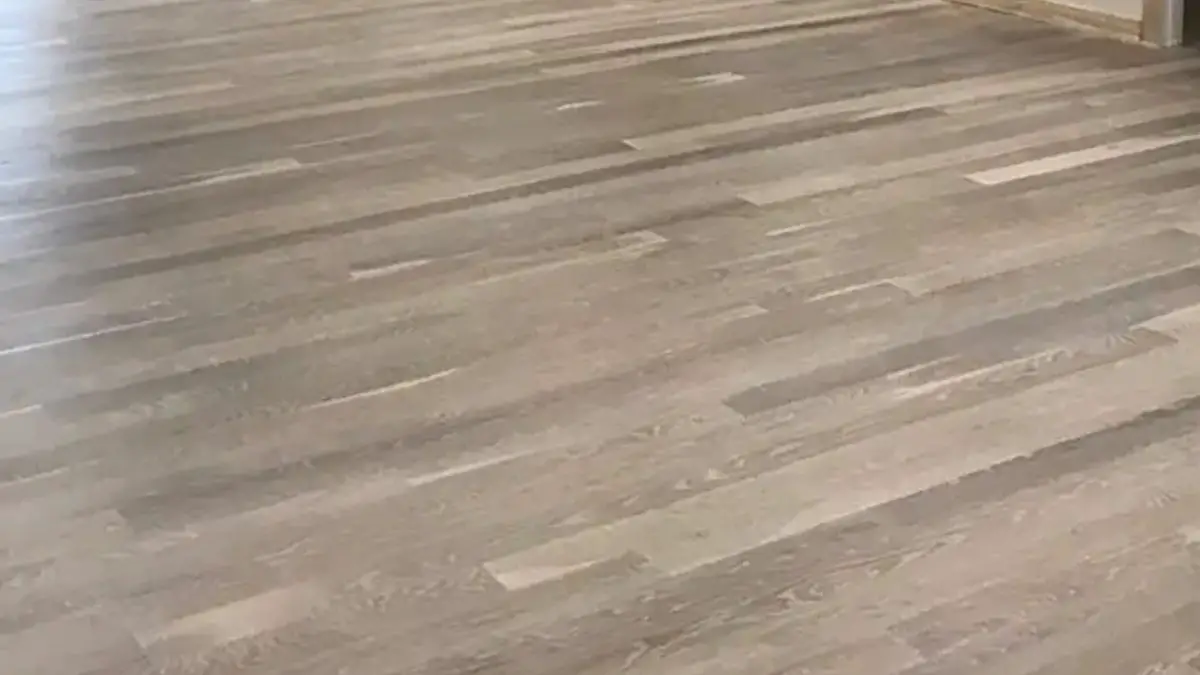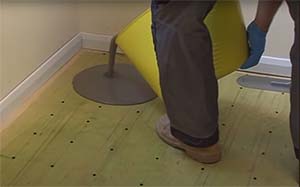
When finding the perfect flooring for your home, there are many qualities to take into consideration, such as if it will add warmth to your home, be durable, or if they are easy to install. The most important thing to look for is if you are going to get your money’s worth or not.
One of the first things to ask yourself before investing in floors is how long they will last. Can you only expect the flooring to be in your home for ten years, or look for a foundation that will last up to a lifetime? So how long does LVT (luxury vinyl tile) flooring last?
Given these floors were installed correctly and are treated with proper maintenance and care, LVT (luxury vinyl tile) flooring can last anywhere between 10 to 20 years. However, it has been known they may last much longer than this, and in some cases, are much better quality than prefinished engineered hardwood.
Although this is the case, LVT floors must be properly maintained and installed to last this period of life. Right now, you are going to learn how to ensure the length of the LVT floor’s lifespan, how to install them properly, and how to choose a luxury vinyl tile floor that will last. Keep reading to find out all there is to know.
What Is The Lifespan Of LVT Floors?
Although we generally know luxury vinyl tile lasts between 10 to 20 years, its lifespan can measure even more so than that, which is anywhere in the middle of 25-50 years, given the proper care and maintenance, which we will go over in a bit.
That being said, LVT is excellent with higher demand traffic, making them great for busy households or even commercial-based properties. Needless to say, they will last a reasonably long time.
What Is LVT Made Of?
When first purchasing LVT floors, you may wonder why they are so skinny yet extremely durable. This may lead you to wonder what exactly luxury vinyl tiles are made up of.
The main ingredient in luxury vinyl tile floors is PVC (polyvinyl chloride), a tough synthetic material used in many products within your home.
Another part about LVT is the vinyl, which is a robust plastic melted multiple times to get what is needed in LVT flooring. Together, they form a solid flooring, making it last much longer than it would if the wear layer was not there.
In general, vinyl floors are typically made in four layers but can sometimes go up to 6 layers depending on the brand you use, but we will only be going over the initial four.
- Wear layer: Being the most crucial layer of LVT floors, this allows your floors from wear and tearing quickly, allowing the planks to last for quite a while.
- Photogenic layer: The second layer is what makes the LVT look good. Companies take a copy of what real wood or tile would essentially look like, and they duplicate that into a print.
- Fill layer: Keeps stability for indentation reasons.
- The backing layer is also known as the underlayment, making it both sound absorbing and making it much softer to walk on.

Choosing An LVT Floor That Lasts
Moving onward with what LVT is made up of, more specifically when finding a luxury vinyl tile, the most important thing you want to look for is the wear layer thickness. As we learned previously, this comes right after the photographic layer, which is essential while choosing the right LVT floor, which we will get to the reason as to why in a moment.
It is essential to choose one that suits your needs. Typically, the thicker the wear layer is, the better. It can usually come in 6, 12, 20, and 26 mils.
If you have a home or area with higher traffic, you will want to go with the 20 mil like the kitchen and living room. On the other hand, lower traffic areas, like in bedrooms and offices, will go for either the 6 or 12 mil. Although it may be tempting to purchase an LVT floor with 26 mils immediately, this is mainly for businesses and other commercial-based areas, so it would not be wise to use it in your own home.
How LVT Holds Up With Foot Traffic
Luxury vinyl tile floors hold up reasonably well with foot traffic. However, the longer time passes, the less of the wear layer you will see in vinyl floors, especially in the kitchen or living room areas. You may notice that bedrooms and the other home regions with lower traffic levels tend to last much longer.
To ensure the longevity of LVT floors, it is best to keep foot traffic light. However, this may not be 100% possible if you have children, animals, or overall a busy household.
One thing to keep in mind is that you would not need to worry about this for quite a while, but to ensure a longer lifespan, have rugs with jute, cotton, and woven backings around instead of plastic latex will be your best fit.
If you get mats that have either of these two properties on the bottom, odds are, they will scratch the surface of the vinyl tiles as time goes by, leaving your luxury vinyl tile to last much less than it should.
How Often Should LVT Be Replaced?
Luxury vinyl tile does not need to be replaced for the next 10 to 20 years. On the contrary, vinyl tile floors would need to be replaced if an emergency occurs, such as mold seeping through the cracks or a single plank or area is scratched and cannot be redeemable. One thing to keep in mind is that if the mold is too severe, it is essential to completely replace all vinyl floorings to ensure people’s safety within your household.
Other reasons you may need to replace LVT floors before its desired time frame can be if a dent were to occur due to heavy furniture or appliances. Suppose the wear layer was somehow thinned out to the point that the floors’ graphics are ruined since it is right beneath the wear layer. But many of these issues are minor fixes, as you can change the planks that are damaged instead of the entire floor.
How Much Does It Cost To Replace LVT?
Since LVT cannot be refinished like hardwood or natural stone, you can replace these floors. A typical cost for luxury vinyl tile would be anywhere between $2.50-5 per square foot, depending on the brand and how much the installation process is.
Although LVT floors are effortless to install, having it professionally done will cost from $1.50 to $2.75 per square foot.
So if you were to have a home of 1500 square feet, with installation and the LVT themselves, at the lowest cost, it would be roughly $6000 for installation. If you were to go on the higher end, the most costly installation would be about $11625.
Although this may seem expensive, authentic hardwood and stone cost 2 to 3 times more than LVT floors, leaving them in a much better stance in terms of being budget-friendly.
Should LVT Floors Be Professionally Cleaned?
Truthfully, it is deemed unnecessary to have your floors cleaned by a professional. This is because LVT floors are not carpet, hardwood, or stone. Luxury vinyl tiles are very sleek and generally clean floors in the first place, so it does not require anything extra.
However, if you wish to get all of the dirt and grime off your floors, all you need is vinegar, water, and soap. This is due to the acidity the vinegar provides, and it will not harm your floors but make them extra clean in the long run.
Can LVT Floors Last More Than 20 Years?
LVT floors can last more than 20 years, given the proper care and maintenance. Some homeowners have stated that they have lasted up to 50 years, which is more than excellent!
With that being said, there are many ways to ensure the longevity of luxury vinyl plank floors. If you follow all of these protocols, there is no doubt in my mind that they will last much longer than anticipated!
How Can I Ensure The Longevity of LVT Flooring?
Many of us love LVT floors for many reasons, especially for their durability purposes, but how can we make sure they last the length of 20+ years? Going right down to the basics, the best way to keep them in tact for the most extended amount of time possible is these ten simple and effective ways:
1. Use The Proper Cleaner
Cleaning with something harsh, such as any mop and shine products, detergents, or ammonia on your floors, will not be good, as these will ruin the flooring’s finish. Whatever cleaning product you invest in, make sure to use something labeled specifically for vinyl or LVT floors.
Alternatively, it is perfectly safe to use an apple cider vinegar solution to remove any dirt on the floors. You can buy a Libman spray mop at your local store and keep the solution made inside the bucket provided. I use this for my LVT floors and put 3/4ths water, 1/4th apple cider vinegar with a few dish soap drops.
2. Do Not Drench The Floors
Although you may not avoid spills and humidity coming into contact with your new floors, it is important not to drench them. Water can slip through the cracks, making the adhesive fall apart, and it can potentially cause mold to happen. This is one of the many ways to avoid any fungus from arising.
3. Mop Frequently
When mopping, make sure to clean anywhere between 2 to 4 times a month. Vinyl floors are very sleek, so they do not need a lot of maintenance in the first place. However, mopping continues to ensure the longevity of your floors. Not to mention, it will allow them to feel better on your feet directly afterward.
4. Sweep Daily
It is essential to sweep your LVT floors daily. To keep the dust and grime off LVT floors, having a quick, daily sweep can help with any overnight hardened food, sharp objects, or anything that may be a potential threat to scratch the floors off the ground.
5. Keep The Floors Away From The Sun
Luxury vinyl tile is known to have its design fade in the sun over time. Avoid this by investing in blinds or put large furniture items and large rugs over the areas where this may cause an issue. Ensure the mats have a woven, cotton, or jute backing instead of rubber and latex for a better LVT lifespan.
6. Make Sure Traffic Is Light
It may be impossible to keep traffic light in some circumstances, such as in busy households or homes containing children and animals, but if you are able, do not get too busy in your home if you want these floors to last a long time.
7. Get a Chair Matt For Rolling Chairs
Rolling chairs have been known to ruin LVT’s wear layer, which is the layer that protects the flooring in itself. Making a small investment in a chair mat or some rug is an excellent idea because it provides both a sense of peace and comfort for you and allows that particular spot within your home to last much longer. It is much easier to replace a mat than it is planks.
8. Keep Shoes Off The Floor
Have you ever been in a home where a friend or family tells you to take off your shoes before entering immediately? This may be because of germs you may have acquired or because they want their floors to last longer than the average joe. Consider doing this in your home. Not only will you have a less germy home, but a much easier time providing better upkeep on your LVT floors.
9. Ensure No Sharp Objects Hit The Planks
We talked about this briefly above, but sharp objects can cause the wear layer to break, making you have to replace that specific floorboard or fix the affected area. To avoid this issue, make sure that no nails, broken pieces of an object, or a sharp piece of plastic are nowhere near your floors.
You can make sure nothing sharp hits the ground by regularly checking underneath areas that are not customarily checked, such as under the couches, desks, kitchen appliances, or dressers.
10. Provide Pads Underneath Furniture
Lastly, putting “shoes” under your furniture is a must to avoid scratches. These can quickly be done, and it is one of the best things you will do for your floors.
Final Thought
Overall, luxury vinyl tile floors last anywhere from 10 to 20 years but can live to be much more than that given the right care and installation. These floors are great for any household to get, so make sure to choose what kind of LVT floors you will have, and you can ensure there will be no issues afterward!







